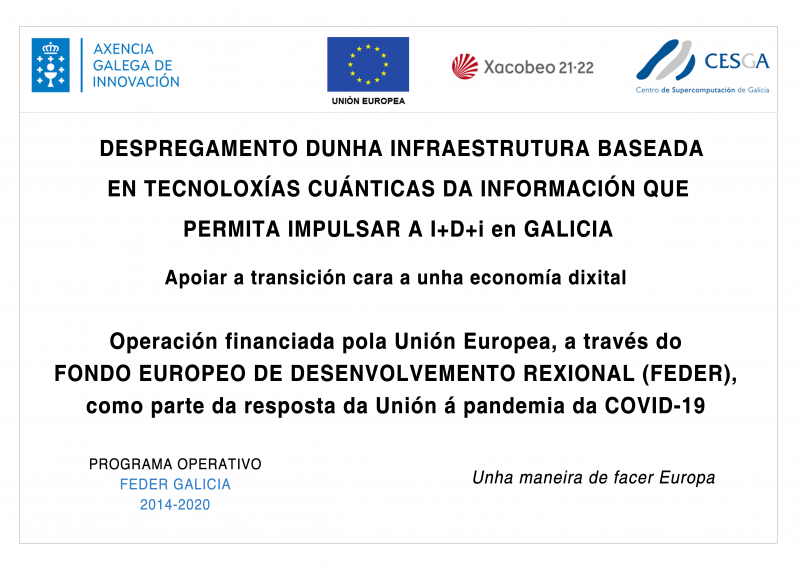The objective of this training module is twofold. First, we will review the topic of randomness, how is randomness generated and how do Quside™ quantum random number generators work. Second, we will review the application of quantum randomness in Monte Carlo simulation techniques and how to leverage recently deployed CESGA QRNG service (based on Quside QRNG technology) in those randomized workloads.
Title: Quantum randomness & Monte Carlo
Taught by: Quside
Dates: Monday 29th, November, from 10:00h to 13:00h.
Place: Remotly, connection details will be provided upon place conformation
Requirements: Basic knowledge of Python
Slots: The number of slots available is limited
Course contents:
1.- Randomness applications: We will first review the applications of randomness in various fields, including security, cryptography, and computation.
2.- Randomness generation technologies: You will learn various randomness generation tools and techniques and what the advantages of each method are for different applications. We will explore what is the basis of randomness, how is randomness generated and what are the limitations for:
– Pseudo-random number generators & Quasi-random number generators
– True random number generators & Quantum random number generators
3.- Quside™ quantum random number generators: Here we will discuss the QRNG products from Quside and some unique features that are offered. In particular, youwill learn:
– Product overview: what are the basis of Quside™ phase-diffusion QRNG
– Randomness metrology: what is the importance of measuring the quality of the randomness and how does that affect standards.
– Performance benchmarks. Understand the performance benchmarks that Quside’s QRNG passed
4.- We will review the Monte Carlo calculation technique and why randomness is a key resource in them.
5.- You will learn how to use the libraries of Quside to obtain quantum randomness, how to use it in your codes and how to measure the quality of the random numbers you use.
6.- You will learn how the QRNGs are used in a specific hands-on example to calculate π using Monte Carlo methods and obtain performance metrics.
7.- We will run and discuss more elaborated examples in finance and science in a hands-on manner.

Registration closed

